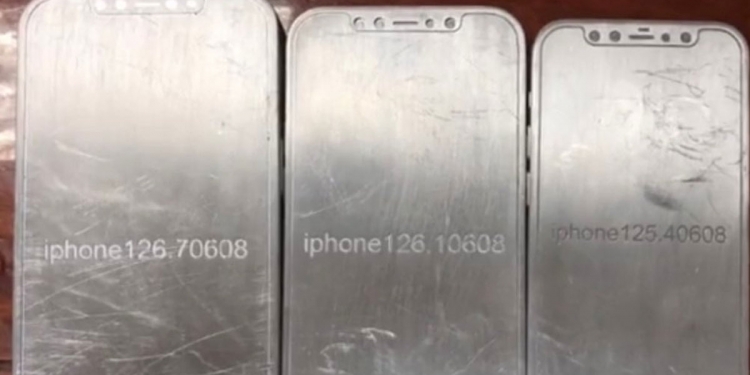iPhone launches are one of the most hype-generating mobile technology events of the year, and the upcoming iPhone 12 isn’t any different. No official date for release has been given yet, but we expect Apple to announce the new iPhone sometime during Q3–Q4 2020 based on past patterns. As such, we’re now starting to see more and more “leaked” information surfacing online.
We’ve already had a first look at some renders made based on CAD drawings, and now, a new set of leaked images confirm that the iPhone 12 could have a “new” design with sharp edges. The reason I’m using quotation marks for “new” is because the first thing that came to my mind when looking at the images was that this looks awfully similar to Apple’s older iPhone designs (iPhone 4, 5).
Still, the images are supposedly of physical moulds that show off four variants in the iPhone 12 range: 5.4″, 6.1″ (two models), and 6.7″ options. Again, the moulds were constructed based on CAD drawings, which are usually used to make smartphone cases for upcoming smartphones. However, this also means that the information here may not be a complete representation of how the devices will actually look upon official release, but still—it’s a glimpse into the future.
On the rear of the moulds, it also looks like a very familiar camera bump, which has also been rumoured to include a LiDAR scanner. This is something that has already been included in the latest 2020 iPad Pro, and will offer users better experience when using augmented reality-based applications.
All in all, it looks like Apple is going towards a similar aesthetic as the iPad Pro, with squared edges and rounded corners. And as a big fan of the iPad Pro’s design, I can’t say that the leaked images are disappointing at all. That said, it would have been nice to see an iPhone 12 that didn’t look like one of the previous iPhones. Imagine that.
What do you think? Are you a fan of sharp edges? If not, why? The iPhone 12 is expected to launch in September 2020 based on past launches, although it will probably be a virtual launch in light of the COVID-19 global pandemic.
[ SOURCE ]








